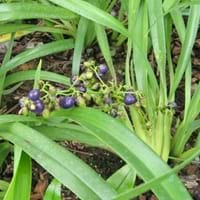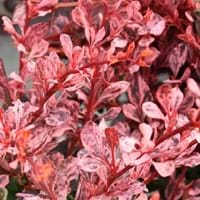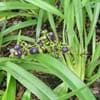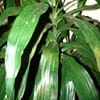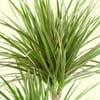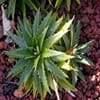Life Span
Perennial
Perennial
Type
Tender Perennial
Shrub
Origin
Africa, Asia, Polynesia, Australia
Eastern Asia, Japan
Types
Not available
Not Available
Habitat
Grassland, Shaded sites, Wet forest
Old fields, stream banks
USDA Hardiness Zone
Not Available
4-8
AHS Heat Zone
Not Available
8-5
Sunset Zone
8, 9, 14, 15, 16, 17, 18, 19, 20, 21, 22, 23, 24
A3, 2b, 3a, 3b, 4, 5, 6, 7, 8, 9, 10, 11, 12, 13, 14, 15, 16, 17, 18, 19, 20, 21, 22, 23, 24
Habit
Clump-Forming
Oval or Rounded
Minimum Height
Not Available
Minimum Width
Not Available
Flower Color
White, Blue, Blue Violet
Yellow, Yellow green
Flower Color Modifier
Bicolor
Not Available
Fruit Color
Blue, Violet
Red orange
Leaf Color in Spring
Green, Blue Green, Dark Green
Light Green
Leaf Color in Summer
Green, Blue Green, Dark Green
Green
Leaf Color in Fall
Green, Blue Green, Dark Green
Purple, Orange, Burgundy, Crimson
Leaf Color in Winter
Light Green
Not Available
Leaf Shape
Long slender
Obovate
Plant Season
Spring, Summer, Fall, Winter
Spring, Summer, Fall, Winter
Sunlight
Full Sun, Partial Sun
Full Sun, Partial Sun
Growth Rate
Medium
Medium
Type of Soil
Not Available
Clay, Loam, Sand
The pH of Soil
Not Available
Acidic, Neutral, Alkaline
Soil Drainage
Well drained
Average
Bloom Time
Early Summer, Summer, Late Summer
Spring, Late Spring
Tolerances
Dry soil
Pollution, Drought, Salt, Soil Compaction
Where to Plant?
Ground
Ground, Pot
How to Plant?
Divison, Offsets, Seedlings
Seedlings
Plant Maintenance
Low
Medium
Watering Requirements
Water during dry weather
Requires regular watering during dry weather
In Summer
Lots of watering
Lots of watering
In Spring
Moderate
Moderate
In Winter
Average Water
Average Water
Soil pH
Not Available
Acidic, Neutral, Alkaline
Soil Type
Not Available
Clay, Loam, Sand
Soil Drainage Capacity
Well drained
Average
Sun Exposure
Full Sun, Partial Sun
Full Sun, Partial Sun
Pruning
Remove damaged fruit, Remove damaged leaves, Remove dead branches, Remove dead leaves
Remove damaged leaves, Remove dead branches, Remove dead leaves
Fertilizers
slow-release fertilizers
All-Purpose Liquid Fertilizer
Pests and Diseases
Not Available
Red blotch, Sunken patches
Plant Tolerance
Dry soil
Drought
Flowers
Showy
Insignificant
Flower Petal Number
Single
Single
Fragrant Flower
Not Available
No
Foliage Texture
Not Available
Medium
Foliage Sheen
Not Available
Matte
Attracts
pollinators
Birds
Allergy
Not Available
Not Available
Aesthetic Uses
Not Used For Aesthetic Purpose
Borders
Beauty Benefits
Not Available
Not Available
Environmental Uses
Agroforestry
Air purification
Medicinal Uses
Not Available
Anthelmintic, Antibacterial, Antiseptic, Cancer
Part of Plant Used
Fruits, Leaves
Fruits, Leaves
Other Uses
Used as a dye
Used to make yellow dye
Used As Indoor Plant
No
No
Used As Outdoor Plant
Yes
Yes
Garden Design
Mixed Border, Tropical
Edging, Foundation, Hedges, Mixed Border, Rock Garden, Wall
Botanical Name
DIANELLA sandwicensis
BERBERIS thunbergii
Common Name
Ukiuki, uki
Japanese Barberry
In Hindi
Ukiuki
Japanese Barberry
In German
Ukiuki
Thunberg-Berberitze
In French
Ukiuki
Berberis thunbergii
In Spanish
Ukiuki
Berberis thunbergii
In Greek
Ukiuki
Japanese Barberry
In Portuguese
Ukiuki
Japanese Barberry
In Polish
Ukiuki
Berberys Thunberga
In Latin
Ukiuki
Japanese Barberry
Phylum
Magnoliophyta
Magnoliophyta
Class
Liliopsida
Magnoliopsida
Order
Liliales
Ranunculales
Family
Liliaceae
Berberidaceae
Clade
Angiosperms, Monocots
Angiosperms, Eudicots
Tribe
Not Available
Not Available
Subfamily
Hemerocallidoideae
Not Available
Number of Species
Not Available
Season and Care of Ukiuki and Rose Glow Barberry
Season and care of Ukiuki and Rose Glow Barberry is important to know. While considering everything about Ukiuki and Rose Glow Barberry Care, growing season is an essential factor. Ukiuki season is Spring, Summer, Fall and Winter and Rose Glow Barberry season is Spring, Summer, Fall and Winter. The type of soil for Ukiuki is Not Available and for Rose Glow Barberry is Clay, Loam, Sand while the PH of soil for Ukiuki is Not Available and for Rose Glow Barberry is Acidic, Neutral, Alkaline.
Ukiuki and Rose Glow Barberry Physical Information
Ukiuki and Rose Glow Barberry physical information is very important for comparison. Ukiuki height is Not Available and width Not Available whereas Rose Glow Barberry height is 90.00 cm and width 120.00 cm. The color specification of Ukiuki and Rose Glow Barberry are as follows:
Ukiuki flower color: White, Blue and Blue Violet
Ukiuki leaf color: Green, Blue Green and Dark Green
Rose Glow Barberry flower color: Yellow and Yellow green
- Rose Glow Barberry leaf color: Light Green
Care of Ukiuki and Rose Glow Barberry
Care of Ukiuki and Rose Glow Barberry include pruning, fertilizers, watering etc. Ukiuki pruning is done Remove damaged fruit, Remove damaged leaves, Remove dead branches and Remove dead leaves and Rose Glow Barberry pruning is done Remove damaged leaves, Remove dead branches and Remove dead leaves. In summer Ukiuki needs Lots of watering and in winter, it needs Average Water. Whereas, in summer Rose Glow Barberry needs Lots of watering and in winter, it needs Average Water.
